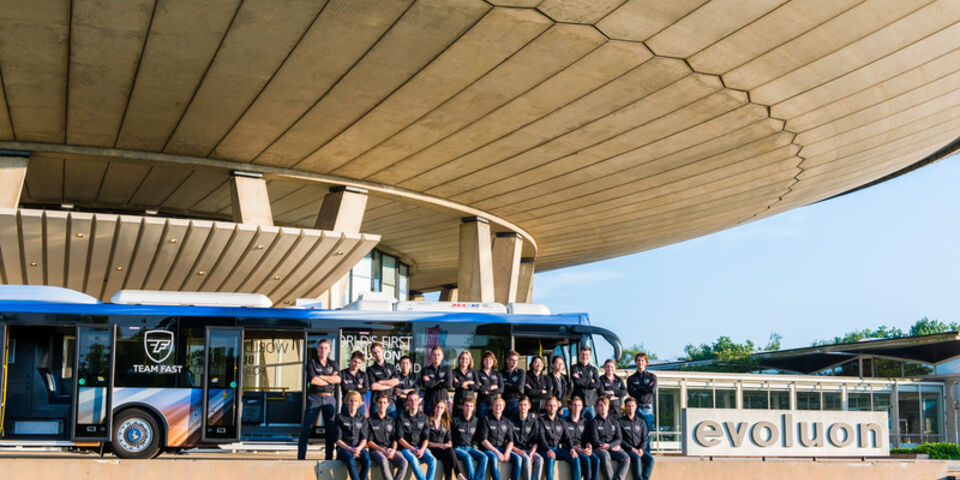Team FAST symposium on 'hydrozine'
Student team FAST is holding Thursday 11 May in the Evoluon a symposium on formic acid, regarded by the students as the environmentally friendly fuel of the future. The primary aim of the Formic Acid Symposium is to introduce formic acid – or hydrozine, as Team FAST calls the fuel - to scientists, and governmental and commercial parties in advance of the presentation of a bus powered by formic acid, planned for July 6.
Visitor numbers of 250 to 300 are expected in the Evoluon, tells Lucas van Cappellen of Team FAST. A good number, he thinks. “Not least because participants are coming from all kinds of sectors, ranging from energy production to automotive.” This is important, he explains, given that the success of formic acid as a new fuel depends on an entire chain. It is not enough to simply demonstrate that the fuel works: “You also have to be able, for instance, to produce it and distribute it through filling stations.”
The team, comprising some 30 students of TU/e and Fontys, is using a chemical reaction discovered recently at TU/e to very quickly split formic acid into hydrogen and CO2. Next, the hydrogen can be used in what is known as a fuel cell to drive an electric motor.
This technology already exists, but its disadvantage is that hydrogen generally needs to be transported in large tanks, under high pressure. Being liquid at room temperature, formic acid provides a cheap and easy alternative for storing hydrogen in vehicles. Moreover, according to the team, it should be possible to drive farther on a tank of formic acid than on the fully charged battery of most electric cars.
Early last year, as an initial step, the students presented a vehicular scale model measuring 1 meter in length. On July 6, in cooperation with manufacturer VDL, they will present a system capable of entirely providing a bus with fuel, and that can be hitched to the back of a bus as a trailer.
If it is up to Team FAST, the word on our lips in future will be hydrozine: the name they have in mind for ‘formic acid as fuel’. “We've noticed that the term formic acid often causes confusion,” says Van Cappellen. “People think it is extracted from ants, or that it is a highly hazardous acid, and that is not the case. Besides, we are currently thinking about specific additives to make the fuel more efficient and ensure it freezes at a lower temperature. Such changes alone would mean we couldn't sell it as formic acid.”
Pure formic acid freezes at a temperature of 8 degrees Celsius. While a lower freezing point would be more favorable, Van Cappellen believes this is less of a problem than it seems. This is because they are using the fuel in a hybrid system involving batteries, he explains. “They supply the power for ignition, and this releases enough heat to bring the fuel up to the right temperature.”
The symposium's speakers include Richard van de Sanden (TU/e professor and director of DIFFER), Martijn de Graaf (Voltachem, working on a reactor to produce formic acid), Ton Schouten (Hamer Nederland, gasoline station builder) and Menno Kleingeld (VDL ETS).


Discussion